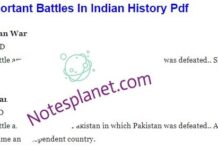History of Rajasthan
Rajasthan or the ‘Place where there are Kings’ is without a doubt perhaps the most lovely places to visit in the whole world. A land soaks with rich history, a land specked with amazing castles, sustaining strongholds, and immortal stories, this lasting area has developed parallelly with the ways of the world.
Administered by a few administrations: Rajputs, Marathas, Chauhans, Mughals, Marathas, and British, this piece of India has consistently been a middle phase of influence, riches, workmanship, and writing, engineering, and amicability. Being a host to various rulers and a blend of societies, Rajasthan has arisen as a great objective throughout the entire existence of India. Now is the ideal time, you should think about how this desert land rose like a phoenix in the pages of history and arrived at the exemplification of a time former!
Ancient Times or Pre-Rajput
The geographic area and ideal condition made Rajasthan an essential area ever. The primary human settlement found in this area returns to the Indus Valley Civilization. Confirmations found in the Jhunjhunu and Sikar regions of Rajasthan demonstrate the presence of 5,000 years of age human settlements in the area.
Vedic sacred writings found in the Brahmavarta (which was at one time a Vedic State), Mehrangarh, and Rewari (both in Haryana), shows the presence of ‘SanatanDharam’ (the establishment of present-day Hinduism) in Rajasthan. Hints of the Harappan Civilization were likewise found after unearthings were completed close to Kalibanga in 1998. Adding all these, it is very obvious that Rajasthan’s set of experiences is pretty much as old as the human civilization.
Other noteworthy confirmations found across the present-day Rajasthan likewise show that it was previously an intermittent focus of fascination among different rulers and lines. Arjuna’s, Kushans, Malavas, Saka Satraps, and Yaudheyas were a portion of the prominent domains Rajasthan saw before 321BCE. Post this time, the state was administered by the Gupta line whose confirmations can be found in and around the Jhalawar area. Extremely old Buddhist caverns and Stupas were found in these locales.
After the ruin of the Gupta Empire, Rajasthan had another period of history under the rule of Gujara-Pratiharas who came into power by 700CE. It was a period when the desert land became stable and began reshaping history!
Rise of Chauhan Era
What we think about Rajasthan today, is the impression or the substance of the much-acclaimed Rajput Era that rose to control during the 9thcentury. Among every one of the families and rulers that administered over this piece of India, Rajput rulers are as yet worshipped however the most persuasive and considered as the pioneer seems to be getting down to the business cutting edge Rajasthan.
In spite of the fact that the Rajput tradition began prospering in the Thar Desert by mid 8thcentury, it was the ninth century when they rose to incomparability and hold order over the whole of Rajasthan. By 12thcentury, this family isolated into an aggregate of 36 unique factions and around 21 administrations. Their visionary information, taste for greatness, undefeatable soul, and enthusiasm at long last made them the most powerful rulers across the incomparable Thar Desert.
Rise and Fall of Mughal Era
Tasting rout in the clash of Tarain, Muhammad Ghori reattacked Prithviraj Chauhan in 1192 and set up the principal Muslim Empire in Rajasthan. This in the long run denoted the defeat of the Chauhan line and aided Muslim rulers to fortify and reproduce the historical backdrop of Rajasthan.
As the Chauhan tradition died into the ways of the world, Muslim matchless quality began rambling and took once again practically the whole of Rajasthan till a ruler from Northern India remained against the Muslim Empire in 1553. It was the valorous ruler named Hem Chandra Vikramaditya (otherwise called ‘Hemu’ by antiquarians), who squashed the then realm and lifted his banner in Rajasthan.
Hemu’s standard over Rajasthan slammed down under the control of Mughal ruler Akbar in the skirmish of ‘Panipat’ in 1556. Crushing Hemu, Akbar showed his advantage in framing union with the Rajput rulers; he even wedded ‘Jodha Bai’, a Rajput Princess from Jodhpur. Despite the fact that the vast majority of the current rulers upheld and welcomed Akbar’s partnership, there were rulers like Raja Maan Singh from Mewar, who remained against the incomparability of Akbar.
Developing conflict and competition between the two rulers brought about a savage fight between the two. With this fight, Akbar set up his standard all over Rajasthan while having the vast majority of the Rajput rulers as his reliable partners.
Maharana Pratap; child of Raja Maan Singh, indeed rose against the Mughal domain and required the skirmish of ‘Haldighati’ against Akbar in 1576. The aftereffect of the fight conflicted with Maharana Pratap and constrained him to go into banishing for very nearly 12 years while proceeding with his battle against the Mughal sovereign valorously until he prevailing in 1588 in the clash of ‘Dewar’.
Akbar’s loss under the control of Rana Pratap caused the ruin of the Mughal Empire without precedent for the historical backdrop of Rajasthan. This destruction additionally brought forth another gallantry framework among the current Rajput and Chauhan rulers and proceeded for a critical timeframe.
Rise of Maratha Empire
Mid-1700 observers the ascent of the Maratha Empire in Rajasthan when PeshwaBaji Rao I from Pune began walking the North. With this, Rajasthan went under the impact of Maratha rulers who were the nearby assistants to Holkars and Scindhia rulers. With each fight, the Maratha domain began growing their base lastly took the vast majority of the unmistakable Rajput rulers under their influence. It was the time when Pune (likewise called the ‘Social Capital’ of Maharashtra) turned into the focal point of force.
Rise of East India Company
Rajasthan’s set of experiences saw a totally different change and measurement after the appearance of East India Company during the nineteenth century. As the whole of the state was then controlled by various rulers, it gave the British government to enroot their arrangements and sway among the rulers. The recently shown up unfamiliar organization executed ‘gap and rule strategy and was altogether fruitful in completing their tasks.
Inside this period Rajasthan saw the foundation of urban communities like Jaipur and Marwar area alongside Bharatpur, Dhaulpur, Karauli, and others. East India Company, at last, proposed the Rajput ruler’s wellbeing and insurance from their foes and requested that they go under British suzerainty. Present-day Ajmer city turned into the base of the British Raj, while the other royal estates were administered by the Rajput rulers.
The term ‘Rajasthan’ was begotten under British Raj after nineteen distinctive Rajput rulers marked settlement to go under a solitary agreement.
Post India’s Independence
After India acquired freedom from British rulers, the Nehru government went into a political arrangement with the Rajput rulers to join autonomous India. Under this understanding, the Rajput rulers have conceded their individual titles, properties, and normal sovereignty as indicated by their status.
Be that as it may, after Indira Gandhi turned into the Prime Minister of Independent India, she abrogated the government framework and titles relating to it. This brought about pulling out titles and stopping the overabundance property from the past families.
Following the capture of sway, Rajasthan turned into an undeniable piece of India and began conduction races as per the Indian Government arrangements. Present day Rajasthan has a sum of 33-regions, 105-sub-divisions, 222-town, and various towns and tehsils. Heera Lal Shastri was the initially chosen Chief Minister (1949-1951) of the state followed by other unmistakable pioneers. As of now, the state is under the standard of Vasundhara Raje who has been chosen twice as the Chief Minister between 2003-2008 and 2103 to introduce.
Tags: history of Rajasthan in Hindi, history of Rajasthan pdf, brief history of Rajasthan, Rajasthan culture
famous kings of Rajasthan, ancient history of Rajasthan pdf, political history of Rajasthan, who was the first king of Rajasthan.











